Renault Megane 2010 News
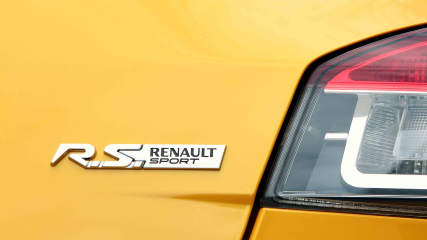
2017 Megane Renault Sport specs firming, EVs and SUVs in RS future
Read the article
By Malcolm Flynn · 03 Oct 2016
Renault has finally confirmed there will be a track-ready, RS version of the new Megane, and that EVs and SUVs that will soon wear the Renault Sport badge.
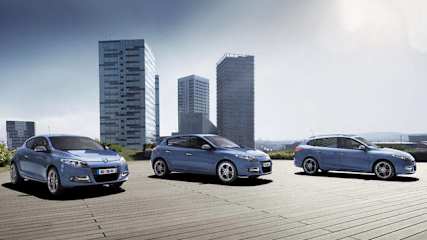
Renault Megane updated
Read the article
By Stuart Martin · 09 Jan 2012
But there are no travel documents for Australia yet. The local arm of the French brand has apparently made a New Year's resolution to focus on the current Megane range for 2012 and Renault Australia's Emily Ambrosy says the facelifted Megane is not likely to appear in Australia this year but wouldn't detail a 2013 timeframe.
"We only introduced Megane hatch and RS250 into Australia at the end of 2010, for us it's still a relatively new vehicle to our line-up - because of that it is too early to confirm anything on timing, pricing, specification, or engines for our phase 2. We'll be focussing on our current product for 2012," she says.
Renault head-office has introduced changes to the Megane range, the most comprehensive of which dwell beneath the bonnet. The French marque is introducing three new engines to the Megane on its home turf.
The three new Energy engines have Stop and Start and brake energy recovery systems; the new Megane will bring with it the first direct-injection turbo petrol engine - the Energy TCe 115 1.2-litre replaces the 1.6-litre 16V, producing 86kW and 190Nm of torque (up 4kW and 40Nm over the 1.6-litre engine), with fuel consumption down as much as 25 per cent to 5.3 litres/100km.
Megane MY12 will get two diesel engines - the dCi 110 and 130. The diesel Energy dCi 110 1.5-litre engine is the top-selling powerplant according to Renault, with fuel use down by 12 per cent to 3.8l/100km, a 20Nm jump in torque to 260Nm, with around 82kW of power.
The Energy dCi 130 1.6-litre diesel engine produces 79kW and 320Nm of torque, with a combined-cycle thirst of 4 litres/100km, a 20 per cent reduction. Small styling changes have been wrought on the front end, with the addition of LED daytime running lights, a gloss-black bumper with chrome touches, as well as new-look wheel designs.
The interior options have grown to include a two-tone leather/alcantara pack available in three variations, as well as a Bose version and GT models with LED lights, a sports steering wheel and red-stitched sports trim.
Megane will be offered (at least in its home market for now) with the "Visio System" which uses a windscreen-mounted camera to control the use of high-beam (above 45km/h) when the level of lighting drops or when no cars are detected.
The camera is also used by the lane departure warning system, which monitors the car's road position and indicator use and warns the driver if the systems decides the driver is drifting across lanes.
Also on the features list for the new car is a hill-start assistance system, Bluetooth phone and audio link, USB input, satnav a rear camera, dual-zone climate control with an air quality sensor with automatic recirculation.
The RS versions of the Megane also get an upgrade, with 11kW and 20Nm on offer when Sport mode is called up, as well as a revised soundtrack and interior trim improvements.
The Renault Megane, manufactured in Palencia, Spain, is the brand's top-selling model in Australia as well as globally - sales exceed 235,000 units worldwide in 2011 and 730,000 units since its launch at the end of 2008.
Megane MY12 will go on sale from March in Europe and then other markets - not including Australia - through the course of the year. Ms Ambrosy says the 2012 sales result of 3622 vehicles was the French brand's best Australian effort since 2002.
"The brand was reintroduced it in 2001 and sold 1960, in 2002 they sold 4572, it tapered off after that - it's exciting for us as it shows the new direction and product, which is a very affordable proposition and great value," she says.
The company has had an inconsistent history when it comes to quality and reliability but the new-generation product is aiming to change that.
"We're showing people how reliable it is with the five-year warranty - we're happy with our warranty claims. Since the new Koleos was introduced in 2008, we've had a decrease of 57 per cent in warranty claims, it's a tremendous turnaround for the brand," she says.
"We've just appointed a new LCV manager to drive that business, Renault LCVs are number one in Europe and has been for the last 12 years, they are great vans and we see huge potential in that area."
The light-commercial side of the ledger also improved, with a 72 per cent increase to 615 light commercial vehicles sales increase with 615 Trafic vans, with more to come on that front from the new Renault Master this year.
Renault Australia managing director Justin Hocevar was thrilled with the sales result. "This result is proof that our strategy of de-positioning our vehicles and providing greater value to our customers was the right approach for Renault Australia," he says.
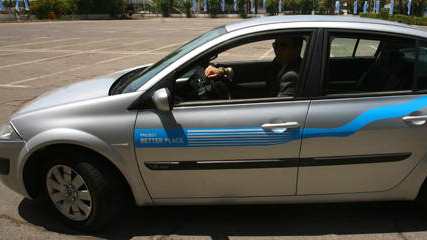
Renault Megane EV local showcase plan
Read the article
By Neil McDonald · 05 Jun 2009
It wants to showcase the zero emission car here to remind consumers it has not been caught napping with new technology. It also believes a car like the Megane EV would work in well with neighbourhood "car share" rental schemes in use in Sydney and Melbourne.
Managing director, Rudi Koenig, believes EV cars are perfect for these schemes, similar to the bicycle rental system in Paris where people can rent a bike for short trips around the city. Koenig believes that over the past 12 months, the electric car story has been dominated by Japanese and North America carmakers. He wants to grab back a slice of the action, reminding consumers that work on the Megane EV is well advanced.
A version of the small sedan is expected to be on sale in the geographically smaller markets of Denmark and Israel next year.
Renault says it will deliver similar performance to a petrol powered 1.6-litre Megane. The company expects the EV car to cost the same as a turbo-diesel, about $3000 more than a conventional petrol engine.
The Megane EV is part of a collaboration between Renault-Nissan and venture company Better Place, which is also helping roll out EV infrastructure to several markets, including Australia. Initially this infrastructure is likely to be centred on Sydney and Melbourne.
Better Place is working with AGL Energy and Macquarie Capital Group to develop a recharging grid for electric cars locally. Renault along with its alliance partner Nissan, has been at the forefront of the push for EV vehicles.
The recently unveiled Renault bebop concept van and Nissan's EV-02 car share components. The bebop is powered by a 44kW electric motor that winds out to 12,000 revs and has a top speed of 130km/h.
The concept's lithium-ion battery pack comes from a Nissan-NEC joint venture. Nissan says these batteries have 90 per cent better efficiency than a conventional petrol engine and are designed to deliver between 80 per cent and 100 per cent peak capacity for at least six years.
Better Place is working with several battery manufacturers to develop new lithium-ion battery technology for a range of new Renault and Nissan vehicles expected to be on sale by 2012.
Lithium-ion batteries store significantly more energy and generate twice the power per unit volume than nickel metal hydride batteries currently used in many hybrids. Renault is also working on a recycling program to make sure the new-generation batteries can be disposed of safely.
The first mass-market electric cars are also likely to hit Australia by 2012. Mitsubishi Australia has already cleared the way to get its i-MIEV on our roads sometime next year, while minor players Blade Electric Vehicles already builds a $42,990 Hyundai Getz.
GM-Holden is also pushing hard to get its hybrid ‘range-extender’ Volt on sale here by 2012. Toyota too will supplement its Prius hybrid next year with the locally build Camry hybrid and a plug-in Prius is also planned.
One of the biggest issues facing EV cars is their short range and time it takes to recharge. Newer ‘fast-charge’ systems slash recharging times and the next-generation batteries are pushing the range beyond 150km between recharges.
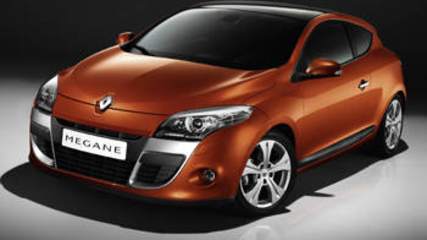
Big rear end gives way to curves
Read the article
By Paul Gover · 03 Nov 2008
Despite a debut this month at the Paris motor show, with styling that finally ditches the dumpy J.Lo rump in favour of a chic new set of curves, the timing for a Down Under debut is not set and not certain for next year.
Renault Australia says it is committed to the new Megane hatch and coupe, as well as the many other Megane-based models that will follow, but says it can't short-cut the French company's global roll-out plan.
“We aim to be on sale in Australia within 12 months of the first sales in Europe,” says Renault Australia marketing chief Craig Smith.
“Megane is rolled out in Europe in November, and it's a staged roll-out that goes for quite a while after that.
“So the indicative timing here is late 2009 or early 2010 ... it's a case of being able to access the models we need.”
Smith says Renault concentrates first on left-hand drive at home in France, gradually spreading the footprint from there.
But he says the roll-out for the new Megane is also complicated by plans to build the cars in a number of factories.
“The international models don't come on stream for a while,” he says. “Some will be manufactured in Europe and some will not. The difference is the cost base.”
Renault's plan for Australia is still under discussion with head office and it is likely to be a mix-and-match process.
“We'll take both models,” Smith says. “So the final line-up will have cars made in Europe and some made somewhere else.”
However, just where else they might be made is not a certainty, according to Smith.
“That is still to be confirmed,” he says.
“The Koleos is made in Korea, we have factories in South America and eastern . There are all sorts of choices.”
And what about the Megane line-up, which stretches to nine body styles in France?
Smith says it probably won't be all nine models, but also won't be too far off that.
The company will “definitely be looking at the RenaultSport models”. He has already seen the cars and is confident they could provide the final breakthrough for Renault Australia after more than five years of struggle and sluggish sales.
“The cars are sensational,” Smith says. “From a local point of view we can't get the cars soon enough. They are everything we need.
“It's a great looking car, the right size, and the right range of powertrains.”
And despite the 12-month delay before the arrival of the new Megane, Smith says the Megane sedan will take Renault part of the way through next year, but he says there will be a gap between the two.
Despite the delay, Smith says Renault Australia plans to be aggressive with their pricing, although he can't commit to a significant reduction from the current stickers, which run from $24,990 for the Megane sedan and $26,990 for the hatch.
“We'll aim to be in the largest segment of the market pricing below where we are at the moment and with the same product.”
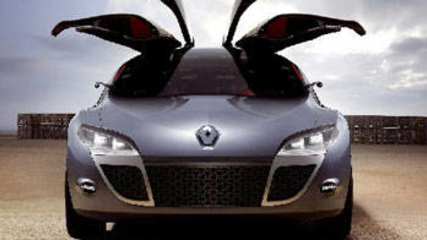
Megane set to fly high
Read the article
By Kevin Hepworth · 17 Apr 2008
Meet the Megane Coupe Cabriolet concept, the standout star of the Geneva Motor Show stacked with designer fantasies and production test beds.“This show car emphatically showcases the evolution of Renault design,” says Renault's Patrick Le Quemont. “Its squatter proportions and powerful, energetic styling talk directly to the driver's senses. The spectacular door-opening kinematics add that little touch of magic.”Those doors, which open upwards in two stages - first the glass swings up followed by the metal bottom section - are the standout feature but are unlikely to carry through to the expected appearance of the production Megane Coupe at the Paris Motor Show in September. Renault is not about to confirm any features of future models but does concede the Megane Concept is a taste of a later compact production coupe.Inside, the concept has been styled with a funky future theme featuring ultra-thin seating, acres of red plastic, brushed aluminium and leather with a full suite of electronic gadgetry, including full Bluetooth connectivity, rear-vision cameras and a locking system operated by a mobile phone. The concept rides on 21in wheels, has Brembo brakes and is powered by a conventional 147kW, two-litre turbocharged four-cylinder engine with drive through a six-speed automatic box. One element of the exterior design likely to make production is the front-end treatment.Meanwhile, Hyundai continues its journey to mainstream innovator with the HED-5 i-Mode minivan concept - a six-seat vision of future urban transport.The i-Mode concept on display in Geneva showcased advanced materials and construction with an interior inspired by natural forms and landscapes. The seating is a unique swivel technology from automotive seating specialists Keiper. Powered by a 2.2-litre diesel with sequential turbochargers with 158kW of power and 450Nm of torque, the concept appears to be built off a modified i30 platform. Hyundai's sister company Kia rolled out three versions of its Soul concept, first shown two years ago in Detroit, but this time the boxy hatch is close to production.As the Soul Diva, the Soul Burner and the Soul Searcher, the three concepts are exterior studies of the same vehicle but, judging from the lack of out-there gadgetry in the interior - and ignoring the fanciful interior trim and colour treatments - the model is very close to a production future.Honda moved another step closer to its promised hybrid vehicle to sit side-by-side with Civic by the end of next year, unveiling the stylish CR-Z concept. A three-door hatch with attitude to burn, the CR-Z has already been anointed by Honda as a hybrid sports car of the future.The CR-Z's sleek look is highlighted by minimalist LED headlights and driving lights, nose-down stance and truncated tail with upright rear glass.

Renault Megane diesel delivers satisfaction
Read the article
By CarsGuide team · 22 Nov 2007
Those tough 'real-world' conditions can quickly reveal a car's weaknesses and strengths, especially if you throw some suburban hills into the equation.
So any car which returns less than 8 litres per 100km in city traffic grabs my attention, particularly with fuel prices again heading in the wrong direction.
I'm not talking about a pint-size car or one with a small engine for which you would expect fuel consumption to be reasonable.
What we are looking at is a mid-size, solidly built European import in Renault's Megane, except this one is a diesel.
After a week of trips to the supermarket, the nursery, the hardware store and commuting to work, the typical duties expected of a family car; the Megane's onboard computer dipped to 7.5 litres per 100km. To put that in cash terms, it's less than $20 for a week's running. Throw in some country travel and the average fuel consumption level would be even better.
Now, the Megane is not the most fuel-efficient car in the market but it gives a good indication of how affordable a diesel can be without having to sacrifice any luxuries, performance or handling.
How much
Petrol-engined Megane prices start at $24,990 after Renault shaved up to $3500 across the model range in April. The diesel arrived in August, with the base Expression priced from $27,990 (manual); the higher-spec diesel Privilege version costs $35,990 (auto only). That's value-for-money buying.
What you get
You may remember the corny TV ads from Renault showing an executive being chauffeured in the Megane. Then the suit made the driver stop so he could take over the wheel because driving the Megane is so much fun. Hmmmm.
It isn't a limo, by a long stretch, but it does have some good prestige features. At the Privilege level you get leather upholstery, cruise control with a handy speed limiter, rear parking sensors, auto switch-on headlights, air conditioning and an average quality six-stack audio system and fog lamps. That's a better kit than some cars that cost substantially more.
There's also a lot of clever user-friendly storage bins, which the Europeans are good at, as well as sun shades, which pull up from inside the rear doors and a glove box, which can be chilled from the air conditioning system.
Another bit of clever design is the flap to the fuel inlet which incorporates the fuel cap . . . so you don't get your hands dirty. Flip the flap and the cap opens with the door. Neat.
There are weird design features, such as a U-shaped handbrake lever which, although looking odd works well, especially if you don't have much strength in your wrist.
This car comes with one of those flat, plastic keyless keys (think of an oversized credit card) that you slot into a hole in the dash and then push a starter button. It's all rather complicated when turning a conventional key does the same thing, although this plastic card will fit in your wallet or purse.
Safety features
Previous Meganes have a five-star rating and there is no reason this one won't be a star performer as well. There's plenty of standard fare with six air bags, electronic stability control, anti-lock brakes, seat belts with pretensioners and load limiters plus rain-sensing wipers.
Design
The boot is enormous for a car this size. The styling is pleasant but not exactly head-turning and the cabin takes a little time to feel at home with, although it works a treat: there's plenty of leg and head room, good vision and the layout of controls, once you get to know where they are, works well.
Under the bonnet
Power comes from a 1.9-litre, four-cylinder direct turbo diesel. Power is a modest 96kW at 4000rpm, although a hefty 300Nm of torque makes up for it, peaking at 2000rpm; but there's a catch.
You can take your pick from a six-speed manual or four-speed auto, which will be the popular choice. However, the auto box robs it of torque (down to 260Nm), so if you want the added performance of the manual you have to drop down to the Expression level of specification. The Privilege comes as an auto only in this country, which is a pity.
Acceleration isn't brilliant but remember this is a diesel. Zero to 100km/h is a leisurely 9.1 seconds.
On the road
In a word, it's classy. Once you get used to the diesel's idiosyncrasies this mid-sized sedan provides quite a rewarding and surprisingly comfortable, stable drive but don't think of it as a sporty car. It isn't.
It can be described as sprightly thanks to its oodles of torque from low down in the rev range.
How thirsty
An impressive 7.5L/100km, city driving. Renault's official figure is 6.8L/100km for the auto.
Impressions
Yes, the Megane is quirky; the French go about designing their cars like no one else; and yes, when I first got in I found it uninspiring with little in the way of “wow” factor. However, the Megane is a car that grows on you.
It takes time to become familiar with its controls and the way it works. By the end of the week familiarity had taken over. I loved it.

Six Quick Questions - Rudi Koenig, Renault
Read the article
By Paul Gover · 04 Jul 2006
1. You have just launched a Megane Phase II in Australia. How important is the car?
"We think it's an exciting new product. Megane is a large part of the business, if you think about the Cabriolet, Scenic and Renault Sport models in addition to the basic hatch and sedan."
2. Renault has also decided to make Electronic Stability Control standard across the Megane. Why?
"The beauty of ESP is that it takes a driver of average ability and gives them well over average abilities in an emergency situation. It really is a silver bullet.
"Research by Renault has shown the benefits of ESP are substantial, with an estimated 35 per cent reduction in single-vehicle accidents attributed to the fitment of ESP."
3. What is the cost of ESP and do you think Renault will get a benefit when GM Holden also makes it standard on the VE Commodore?
"It is about a $1000 package. We asked France what the cost was, and whether it could be across the range. So it was a local initiative. "I think it will reinforce the buying decision and what it will do is keep Renault on the consideration set.
"We wanted to put a mark on the market that's a little bit different. This certainly gives us the opportunity. I think Holden coming onto the market with ESP will reinforce our decision. Our timing was more about Series II Megane than when Holden were going to launch."
4. So, is Renault trying to be the new Volvo on the safety front?
"The difference is that Renault is about safety with fun. And you cannot be 'the' safe one, beacuse most people perceive safety with all cars.
"We're not looking to be the new Volvo, but it's such an integral part of renault that we should shout it.
"We try to make safety as much fun as possible. It's good to be serious, but it's also good to have fun while being serious."
5. Your sales prediction this year is about 3000 cars yet Renault originally forecast 7500 by now. What has gone wrong?
"We're not happy. But that's in line with our forecasting. "It's all well and good to target 7500 but you have got to have product and resources. Those things didn't get.
"We have some aggressive plans for the future. Going ahead, we have a solid base and we will grow from there. We will go ahead.
"It's always an element of frustration. But I am a patient man. And we do have to walk before we run, and I think we are walking constructively. I would rather do the job properly.
6. What have you got in the pipeline?
"Other brands have the advantage of a large carpark, so their service can carry them. Our carpark is about 17,000 cars now, and it's growing, but we cannot sustatin our profitability without giving a chance of new cars.
"We have the Scenic II and diesel engines next year. "We're looking for a double banger. We'll have the grand Scenic seven- seater and five-seater, and diesel.
"Renault also has plans for 26 new models between now and 2009. They will be into areas which are more global and less European."




